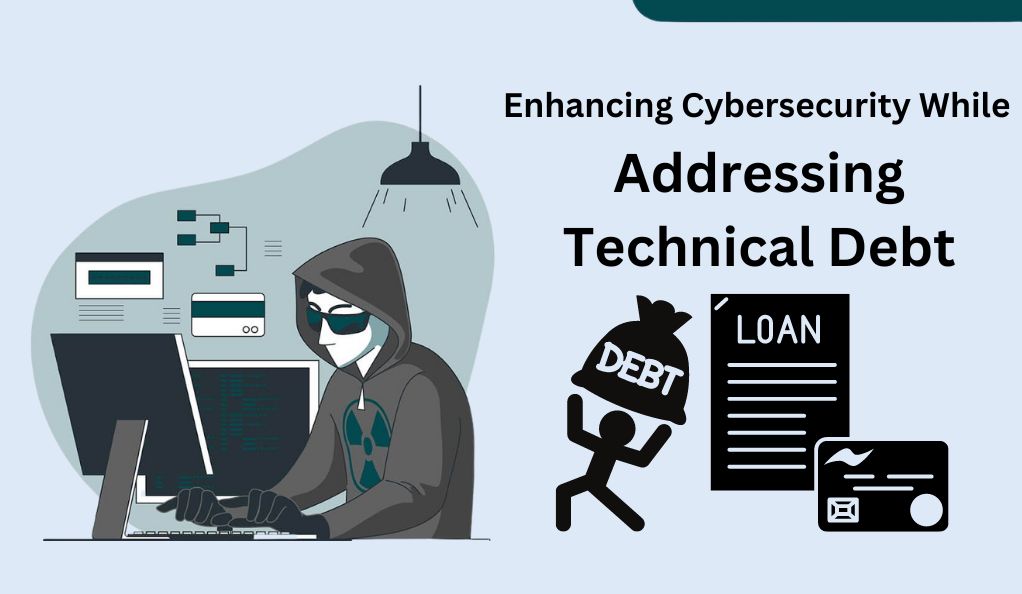Technical Debt: Balancing Internet Safety and Security
We explore the concept of technical debt, defining it as the cost of quick solutions in software development that lead to more work later. This section sets the stage for understanding how technical debt impacts software quality and security, highlighting its significance in the fast-paced world of technology.
Definition and Origin of Technical Debt
Technical debt is a term often used in software development. It describes what happens when developers choose easier or quicker ways to build software now, knowing that it might cause more work or problems later. The idea comes from a man named Ward Cunningham. He compared this to borrowing money. If you borrow money, you can buy something now, but you have to pay back more later. In the same way, taking shortcuts in software can mean extra work in the future.

The Growing Concern of Technical Debt in Modern Software Development
In today’s fast-moving world of technology, technical debt is becoming a big worry. Companies want to release new software quickly to keep up with competitors and meet customer needs. But, when they rush, they often create technical debt. This can lead to software that is hard to improve or fix later. As technology keeps changing rapidly, the problem of technical debt is becoming more important. It can slow down companies and make their software less safe. So, understanding and managing technical debt is key for successful, long-lasting software.
The Impact of Technical Debt on Cybersecurity
Technical debt doesn’t just affect how well software works; it also has a big impact on cybersecurity. When software is rushed and technical debt increases, it often means that security isn’t given enough attention. This can lead to serious problems.

Vulnerabilities and Risks Associated with High Technical Debt
- Increased Vulnerabilities: Quick fixes and shortcuts in software development can leave the door open for hackers. These weak spots are like leaving a window open in your house; they make it easier for someone to get in.
- Harder to Update Security: When there’s a lot of technical debt, updating security becomes harder. It’s like trying to fix a car while it’s still moving. The more debt there is, the harder it is to make these necessary changes.
- Slow Response to Threats: Companies with high technical debt often react slowly to new security threats. It’s like being slow to respond to a fire alarm. The longer it takes, the worse the damage can be.
Real-World Examples: The Consequences of Ignoring Technical Debt
Consider the case of a big company that suffered a data breach because they hadn’t updated their software. This was due to the technical debt they had built up over time. The breach exposed customer data and cost the company a lot of money and trust. It’s a real reminder of how important it is to manage technical debt to keep software safe.
Identifying and Measuring Technical Debt
Knowing how much technical debt you have and where it is can be tricky. It’s like trying to find hidden cracks in a big building. But it’s important to identify and measure it, so you can fix it before it becomes a bigger problem.
Common Causes of Technical Debt
- Rushing Projects: When teams hurry to finish a project, they often take shortcuts. These shortcuts can lead to technical debt.
- Not Enough Testing: If software isn’t tested thoroughly, problems might go unnoticed. This can add to technical debt.
- Outdated Technologies: Using old technologies can also cause technical debt. It’s like using old tools for a new job. They might not work as well.
Tools and Techniques for Assessing Technical Debt
- Code Reviews: Regularly checking the code can help find where debt is piling up. It’s like going to the doctor for a check-up.
- Tracking Bugs and Issues: Keeping a close eye on bugs and issues can show where the software is weak. It’s like tracking signs of wear and tear in a car.
- Using Software Tools: There are special tools that can help measure technical debt. They work like a calculator, adding up the cost of the problems in the software.
Strategies for Reducing Technical Debt
Reducing technical debt is like cleaning a cluttered house; it takes time and effort but makes things work better in the long run. There are several strategies that teams can use to reduce their technical debt, making their software more efficient and secure.
Integrating Best IT Practices and Team Collaboration
- Regular Code Refactoring: Just like tidying up a room regularly, refactoring code means organizing and improving existing code without adding new features. It helps keep the code clean and manageable.
- Prioritizing Bug Fixes: Fixing bugs as soon as they are found can prevent them from turning into bigger issues. It’s like fixing a leaky faucet right away to avoid water damage.
- Effective Team Communication: Ensuring everyone on the team communicates well can prevent misunderstandings that lead to technical debt. It’s like a team sport where players need to talk to each other to win.
Implementing Iterative Development and Regular Updates
- Adopting Agile Methodologies: Using agile methodologies means developing software in small, manageable pieces. This approach helps teams address issues as they arise, rather than letting them pile up.
- Regular Software Updates: Keeping software up to date is crucial. It’s like getting regular oil changes for your car to keep it running smoothly.
- Continuous Learning: Encouraging continuous learning within the team can help them stay up to date with the best practices and newest technologies, reducing the chance of technical debt building up.
Enhancing Cybersecurity While Addressing Technical Debt

Keeping your software safe from hackers is a lot like protecting your house from burglars. When you work on reducing technical debt, it’s a good chance to also strengthen your cybersecurity. This means making your software not just better, but also safer.
Aligning Technical Debt Reduction with Cybersecurity Goals
- Security-Focused Code Reviews: When you clean up your code to reduce technical debt, also look for security risks. It’s like checking both the brakes and the airbags when you service a car.
- Updating Security Measures: As you update your software, add the latest security features. It’s like upgrading your house locks to the latest, strongest ones.
- Training Teams on Security Best Practices: Educate your team about cybersecurity. The more they know, the better they can protect the software. It’s like teaching everyone in your house how to keep it safe.
Importance of Incident Response Planning and Security Testing
- Regular Security Drills: Just like fire drills, regular security drills can help your team know what to do in case of a cyber attack. It prepares them for real emergencies.
- Investing in Security Testing Tools: Use tools that specifically look for weak spots in your software’s security. It’s like having a security camera that alerts you to trouble.
- Having a Response Plan: If a security issue does happen, having a plan in place can help you fix it faster and better. It’s like having a first aid kit ready for emergencies.
The Role of Agile and DevSecOps in Managing Technical Debt
Agile and DevSecOps are like special tools in a toolbox. They help manage technical debt by making sure software development is flexible and secure from the start. Let’s see how they play a key role in keeping technical debt low and security high.
Agile Methodologies for Sustainable Software Development
- Flexibility and Adaptability: Agile is all about being flexible. It’s like building a house with room to change and grow.
- Frequent Iterations: Agile breaks down work into smaller parts, making it easier to spot and fix issues early. It’s like cleaning your house room by room instead of waiting for a big mess.
- Continuous Feedback: Regular feedback in Agile helps teams stay on track and avoid building up technical debt. It’s like getting regular health check-ups instead of waiting for problems to get worse.

Incorporating Security into the Development Lifecycle with DevSecOps
DevSecOps integrates security throughout the software development process, akin to ensuring every component of a new car is safe from the start, not just adding seatbelts later. It fosters team collaboration, mirroring a sports team where everyone participates in offense and defense. Automated security checks, like a self-monitoring smart smoke detector, streamline the identification and notification of security issues, enhancing efficiency and safety.
Leveraging Technology and Innovation to Mitigate Technical Debt
Using modern technology and innovative ideas is like having the best tools to fix a problem. These tools can help reduce technical debt, making software better and more efficient.
The Use of AI and Automation in Managing Technical Debt
- AI for Problem-Solving: Artificial Intelligence (AI) can help find and solve issues in software. It’s like having a smart assistant that points out problems you might not see.
- Automation for Efficiency: Automation can handle repetitive tasks, freeing up time for the team to focus on more important things. It’s like having a robot to do the boring work, so you can do the interesting stuff.
Continuous Learning and Adapting to Technological Advancements
Remaining current with tech trends aids in addressing technical debt through novel approaches, much like having the latest and most effective tools at your disposal. Fostering team innovation encourages inventive solutions, akin to thinking outside the box to tackle problems differently.
Conclusion
Reducing technical debt is crucial for creating strong, secure software. It’s like taking care of your car so it runs smoothly and doesn’t break down. By using strategies like Agile and DevSecOps, we can make software that’s both good quality and safe. Embracing new technologies like AI and automation also helps in tackling technical debt efficiently.
Remember, managing technical debt isn’t just a one-time fix; it’s an ongoing process. It’s like keeping your house clean and in good repair. You need to keep working at it regularly. By staying vigilant and proactive, we can prevent small issues from turning into big problems. In the end, our goal is to build software that not only meets today’s needs but is also ready for tomorrow’s challenges. This way, we ensure that our digital world is not just fast and innovative but also secure and reliable.


Leave a Reply